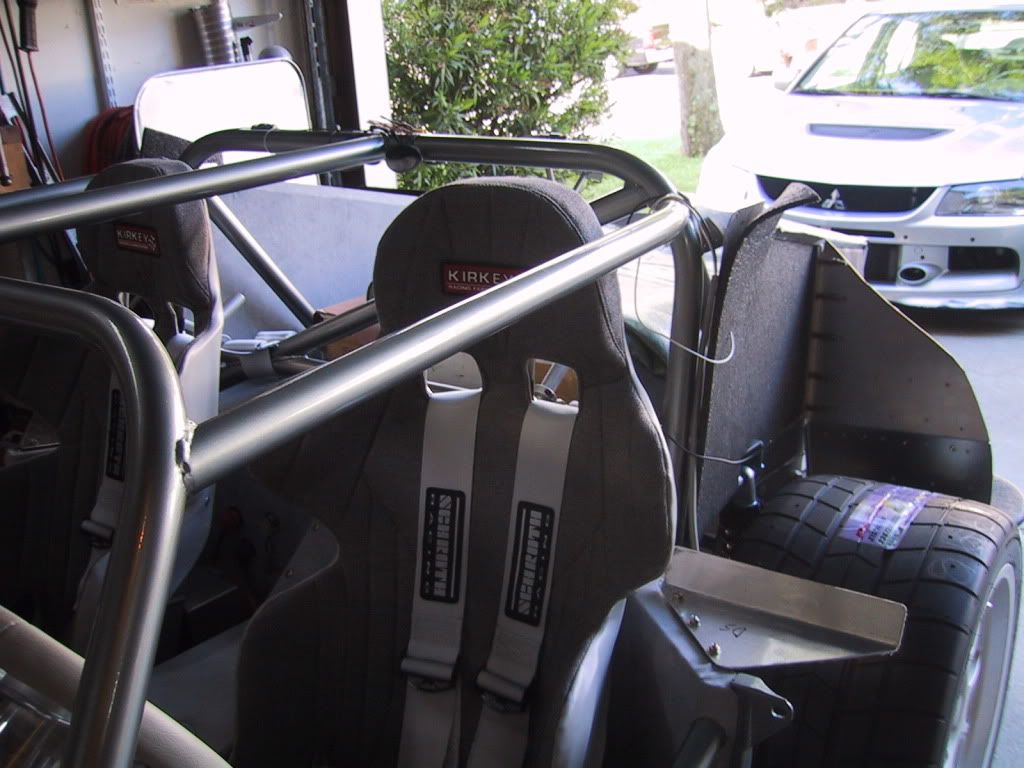I'm going to be making some frame mods to my new coupe, with the goals of 1) adding door bars to make it legal for SCCA, NASA and ECTA racing; 2) making it safer to crash (not that I'm planning on it); 3) making it as stiff as possible, within reason; and 4) making it mine, so to speak. I've read the foregoing rulebooks, I believe that I understand what each requires, and I have the correct tubing (1.5" x .120 DOM) on hand.
The pictures below illustrate, somewhat crudely, a little bit of what I'm thinking of doing to achieve goals #2-4. I'd really appreciate hearing if anyone thinks that what I'm thinking is a good idea, a complete waste of time, not enough of a benefit to justify the extra weight, etc. Do not hesitate to point out if something will be little more than decorative. I don't want to reinvent the wheel here, and tube chassis design is far from my area of expertise. I'd also appreciate any photos from folks who have done essentially the same thing, particularly door bars, as I am at the early stages of figuring out how to add them. Thanks in advance for your thoughts.
Roll Bar Additions 3Roll Bar Additions 4.JPG
I plan to make the cross-bar on the two rear bars removable with Ballistic Fabrication connections, which should let me install the trunk floor panel without too much hassle. As for the additional bars connecting the front and back hoops, would there be any benefit to doing one diagonal bar from the left front to the right rear (somewhat in line with how the chassis twists under a hard launch)?
IRS Gussett 1IRS Gussett 2.JPG
Is there anything that I might want to gussett back here? The car will probably make about 350 horsepower in its first iteration (331 c.i.). Twenty years from now, it'll likely have a little more!
IRS Brace 1IRS Brace 2.JPG
Adding a bar in here seems like it would stiffen the rear frame a decent amount. Any downside? From everything I've seen it wouldn't interfere with anything (gas tank, battery), but I'd rather find that out now!
left front gussettleft front gussett 2.JPG
Part of me thinks that the gussetts will be overkill; part of me doesn't. Any thoughts would be welcome.
Jacob McCrea
- Home
- Latest Posts!
- Forums
- Blogs
- Vendors
- Forms
-
Links

- Welcomes and Introductions
- Roadster
- Type 65 Coupe
- 33 Hot Rod
- GTM Supercar
- 818
- Challenge Series
- 289 USRCC
- Coyote R&D
- Ask a Factory Five Tech
- Tech Updates
- General Discussions
- Off Topic Discussions
- Eastern Region
- Central Region
- Mountain Region
- Pacific Region
- Canadian Discussions
- Want to buy
- For Sale
- Pay it forward
-
Gallery

- Wiki-Build-Tech



 Thanks:
Thanks:  Likes:
Likes: 

 Reply With Quote
Reply With Quote







 Keep the photos and info coming
Keep the photos and info coming



